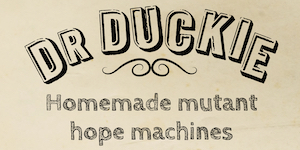Not that we needed one, but there’s a whole new reason to love the Royal Vauxhall Tavern: a life-size street-art stencil of Britain’s fave Olympic medalist/smiley twink/Speedo-model/same-sex-love poster boy, Tom Daley, brandishing a groin-level declaration that ‘All We Need Is Love’, complete with rainbow-hued love-heart.
Created on Friday (January 17, 2014) by street artist Pegasus, the piece was promptly welcomed by the venue on its Twitter feed.
It strikes me as a very simple, welcome and just bloody lovely intervention into the debate over LGBT rights and the upcoming Winter Olympics at Sochi – a debate generally characterisable as a depressing shitstorm of bigotry, hypocrisy and inanity. (Just yesterday, we saw Vladimir Putin conflating homosexuality and paedophilia, sporting the closest thing to a smirk his increasingly plasticised face allows.)
As I suggested when Tom Daley first posted his video revealing that he was dating a guy, it can only be a good thing when famous, well-liked people confirm that sexuality isn’t a choice or a political statement in itself – or a reason to be denied a place in one’s family or society. Sexuality emerges from our feelings, desires and imaginations, and attempts to regulate it from above can cause distress and suffering but cannot truly stifle it.
You could say something similar about both gay nightlife performance culture and street art. Both are often viewed as less ‘legitimate’ than other forms of culture, if not downright undesirable. Yet both emerge directly from the desire to give creative expression to real feelings about the world we live in – as often as not, feelings related to repression, alienation, denial and exclusion – and the desire to connect directly with our street-level peers without the mediation of established, normative institutions.
In other words, variations on: “Here we are, Vlad. If you don’t like it, bite me.”
The RVT has been a home to queer performance since before the war, cradle of a lineage that dates back to the Vauxhall Pleasure Gardens and boasts such superlatively fanged underdogs as Regina Fong, Lily Savage and David Hoyle. The post-Banksy street art scene is younger, and already more commercialised in some respects, but still offers a vibrant, visceral way for artists to put their vision directly in front of thousands and thousands of people.
That’s what makes Pegasus’s Tom Daley piece such a treasure. It playfully connects all these DIY cultural forces in the naked, smiling form of a celebrity figure who is both liked and desired. It uses that iconic image as a vehicle not for satire but for a simple, affirmative message of love. And it does it in full view of one of south London’s busiest traffic junctions.
Clearly, Pegasus is the right man for the job. Originally from Chicago, the 29-year-old artist has lived in London for 11 years and is perhaps best known for Fallen Angel, an image of Amy Winehouse on the side of a Camden information centre-cum-Starbucks that was whitewashed over before being repainted and ‘opened’ by Winehouse’s mother in December 2013. But he’s long been interested in playing with icons of powerful female celebrity, royalty, camp culture, hot boys and LGBT equality.
I mean, look at these pieces: Lucy, Madge, Harry, Divine, Blanche and Jane… What’s not to like?
Pegasus is also unusually approachable for a street artist. He answered a few questions when I got hold of him earlier today…
A lot of street art is ironic or satirical but your Tom Daley image seems really straightforward, in a good way.
The piece isn’t negative in any way. I often like to be ironic with certain people but with Tom Daley being as young as he is, and as well loved, it was a massive decision [for him to come out], and so brave, so I didn’t want to be mean. I remembered he’d posted a naked picture asking people to follow him and I thought, ‘I’m going to use that same photo to make a statement: it’s okay to be gay’.
You’ve covered a lot of gay-friendly subjects, from celebrities to issues of equality.
I’m a pop artist. It’s about portraying people in the way I want to portray them. And if you want a way to connect with a lot of people, put it on the street.
Why did you choose the RVT for this piece?
I wanted it to be my first real south London piece. I just rocked up and did it and hoped they liked it, which they seem to! It’s a beautiful building. I always look at colours, and where a building’s positioned. It’s a prime location – everyone walking past is going to see it, even from the other side of the road. Actually, I’m short-sighted and from a distance, for a moment, I thought it was a real naked guy.
What do you hope the response to the piece will be?
I hope people will take it for what it is and that a lot of people will relate to it. We know that homophobia happens all over the world, in Russia in particular at the moment. We don’t always hear about it here at home but for somebody of his status to come out was a massive risk. What better role model to portray out on the streets? Love is love.
Follow Pegasus on Twitter or like him on Facebook. His website is here.


